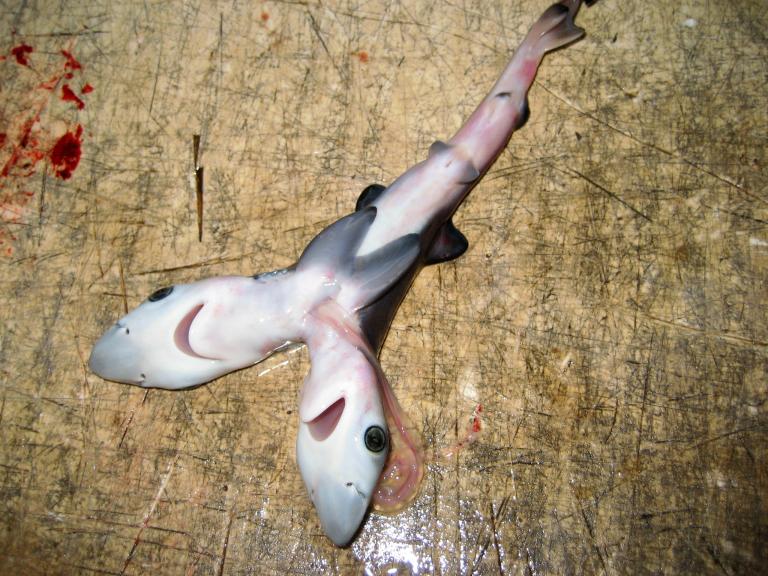Appearances of 2-headed sharks continue to baffle scientists
With so much change happening in the world these days, both man-made and natural, it’s no wonder mutated fish have begun to turn up with more frequency–particularly two-headed sharks.
A team of Spanish researchers recently identified an embryo of an Atlantic sawtail catshark that had two heads, reports the National Geographic.
The discovery was also documented in the Journal of Fish Biology, which stated that the discovery was made while researchers were raising sharks for human-health research in the laboratory. The team noticed the two-headed embryo through the translucent shark egg. Furthermore, it was the first documented two-headed specimen for the catshark species.
Study leader Valentin Sans-Coma says they won’t know whether the deformed animal would have survived had it been allowed to hatch. The research team had decided to open the egg to study the rare embryo. Due to the rarity of conjoined twins in the offspring of egg-laying sharks, the researchers deduced that it was likely they died before people could even find them.
Historically, two-headed shark discoveries have been few and far in between, which makes it hard to study the cause of their mutations.
The mutation found by Sans-Coma’s team is being suggested as a genetic disorder as it was just one out of 800 specimens grown in the lab that were free from infections, chemicals and radiation.
Wild sharks’ malformation, however, could be attributed to several factors including viral infections, pollution, metabolic disorders and a dwindling gene pool due to overfishing.
Another recent study by marine scientist Nicolas Ehemann features a smalleye smooth-hound shark and blue shark. These two-headed sharks were the first to be found in the Caribbean Sea. They were discovered by local fishermen off Venezuela’s Margarita Island.
To date, blue sharks have produced the most recorded two-headed embryos due to the fact that a female blue shark can carry up to 50 babies at a time.
Ehemann says that studying shark deformities is a difficult topic due to the shortage of samples.
“I would like to study these things, but it’s not like you throw out a net and you catch two-headed sharks every so often,” he says. Alfred Bayle
